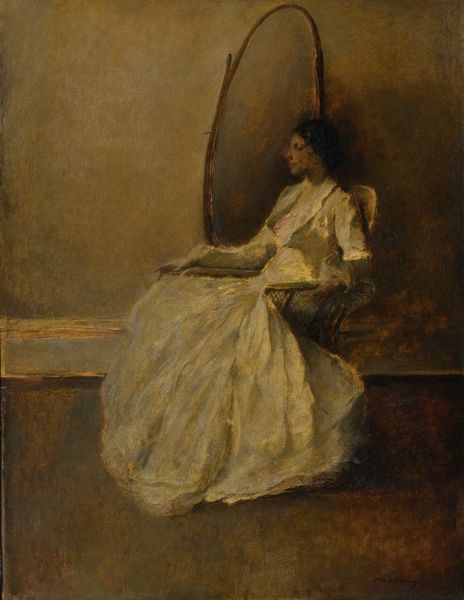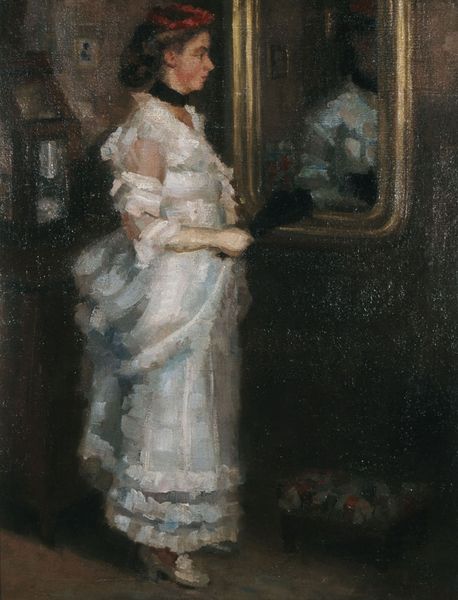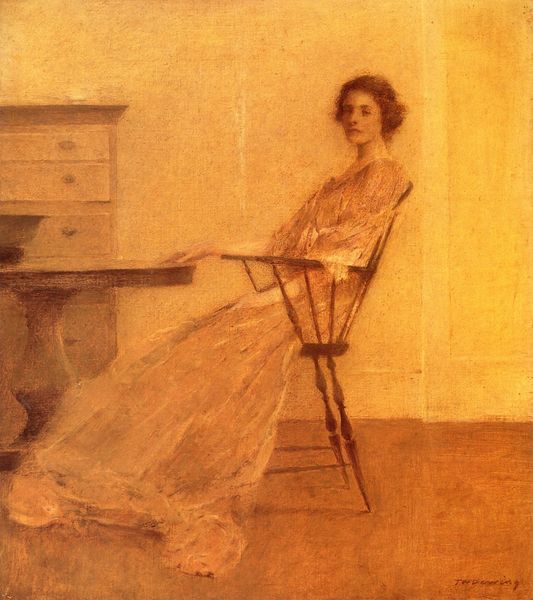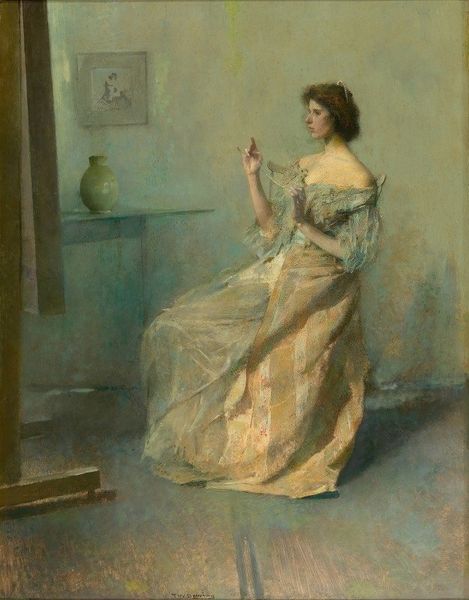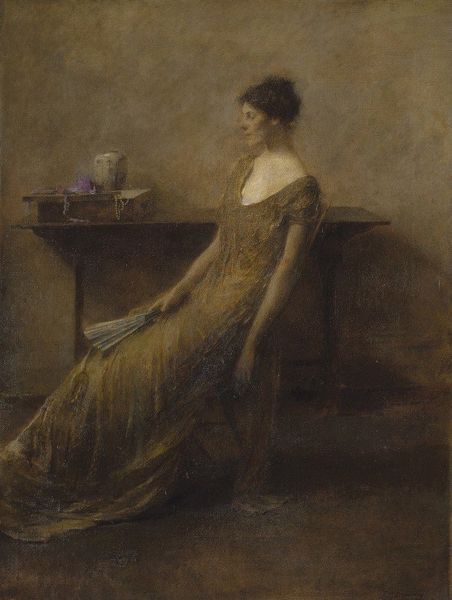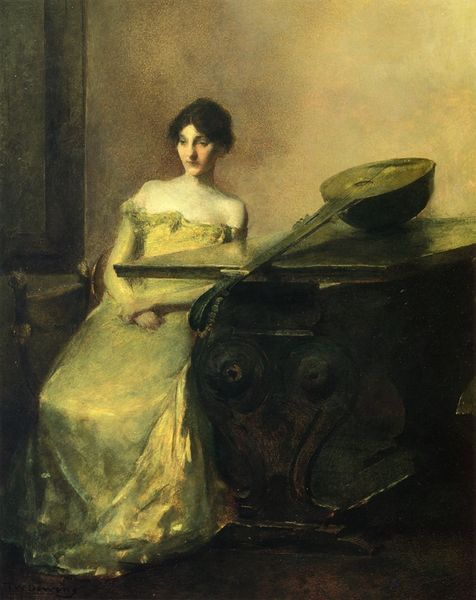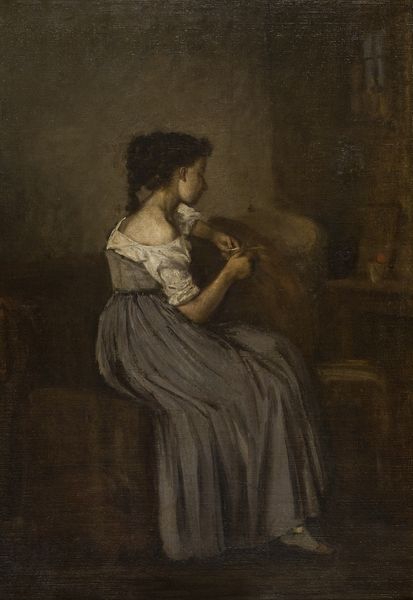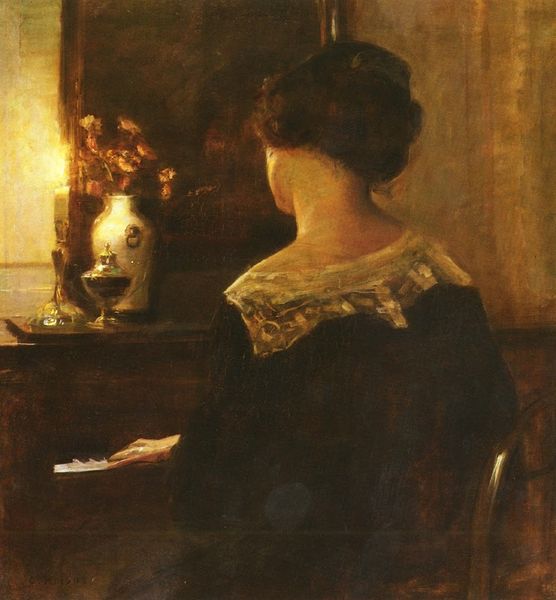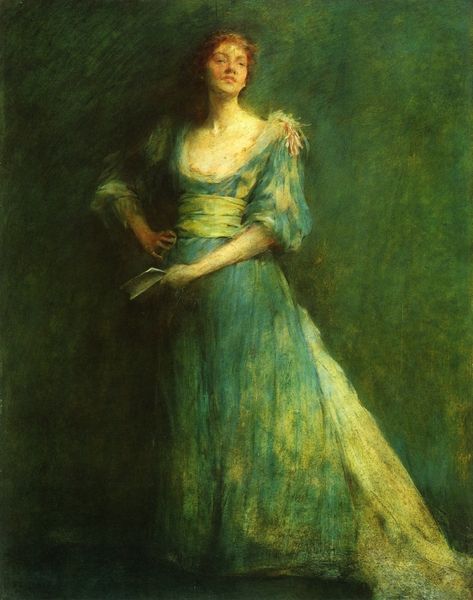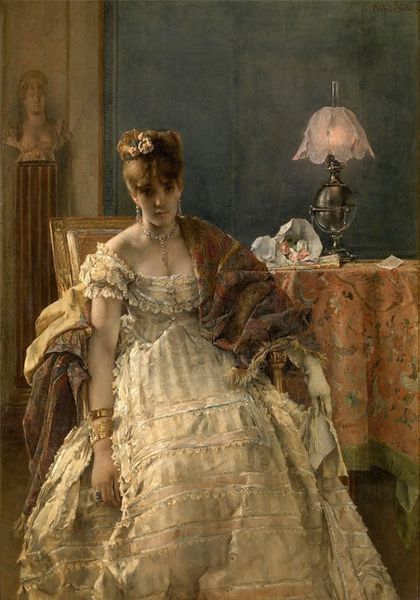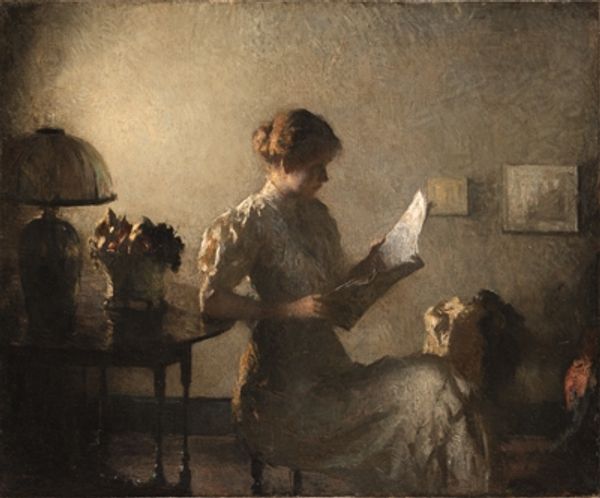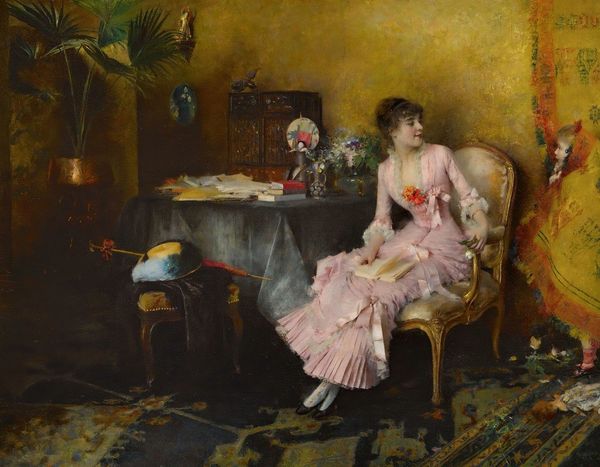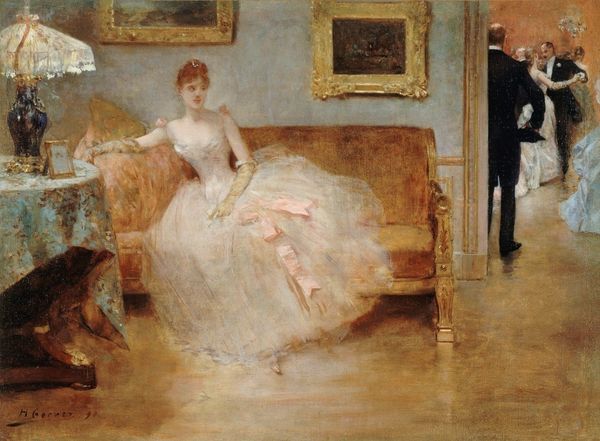
Copyright: Public domain
Curator: Immediately, I’m struck by a sense of quiet introspection in this work. The soft colors and blurred lines create an almost dreamlike atmosphere. Editor: You’ve put your finger on its essence. The artwork, created circa 1910 by Thomas Wilmer Dewing, is titled "Before the Mirror." Dewing was very much engaged with portraying women in aesthetic interior settings and here, he offers a window into the liminal space of female self-perception. Curator: That context enriches my interpretation. I’m drawn to the way the woman’s gaze is directed, not outwards, but towards her own reflection, doubled by the mirror. What sociopolitical ideas would have affected this focus on interiority? Editor: Well, think about the limitations imposed on women's roles in society during that era. Confined primarily to the domestic sphere, their identities were often shaped by societal expectations of beauty and decorum. This painting subtly highlights the complex relationship women had with their self-image and their agency within that confined space. Note also, how Dewing, rather conventionally, emphasizes her daintiness and elegance through a cool color palette, in a manner that recalls French Impressionism. Curator: Indeed. And the painting-within-a-painting! It seems the figure could be looking not at herself, but towards a landscape, maybe another space beyond that room that has caught her eye through an opening. This hints at longing or seeking. Does this appeal to introspection signal agency? Or is the moment also laced with alienation and disconnect? Editor: The inclusion of a hazy landscape suggests the artist's preoccupation with transcendentalist philosophies. Dewing creates an intentional tension. Her poised stillness is perhaps more complicated and fraught. The soft focus contributes to a sense of ambiguity, encouraging viewers to contemplate their own assumptions. Curator: The painting does ask us to reflect. I like how we see a conventional oil portrait, with a figure enacting traditional womanly activities, as well as the questioning that arises as we delve into Dewing’s own aestheticization. Editor: By understanding "Before the Mirror" through a historical and theoretical lens, we can fully appreciate the complexities of identity formation and representation that persist to this day. This prompts me to re-evaluate, again and again, what Dewing may be trying to convey.
Comments
No comments
Be the first to comment and join the conversation on the ultimate creative platform.
